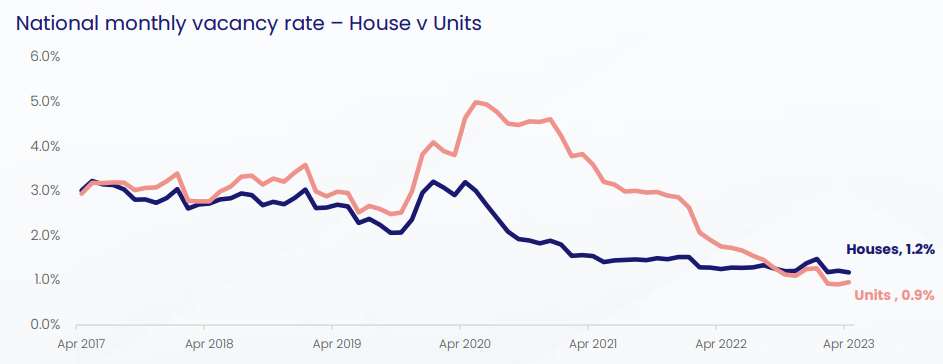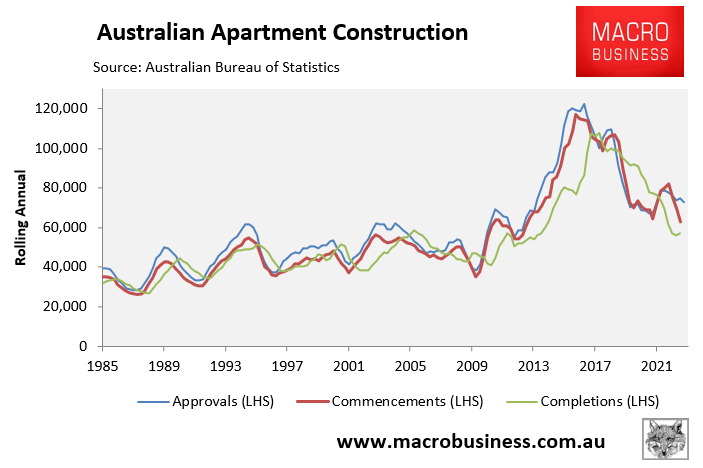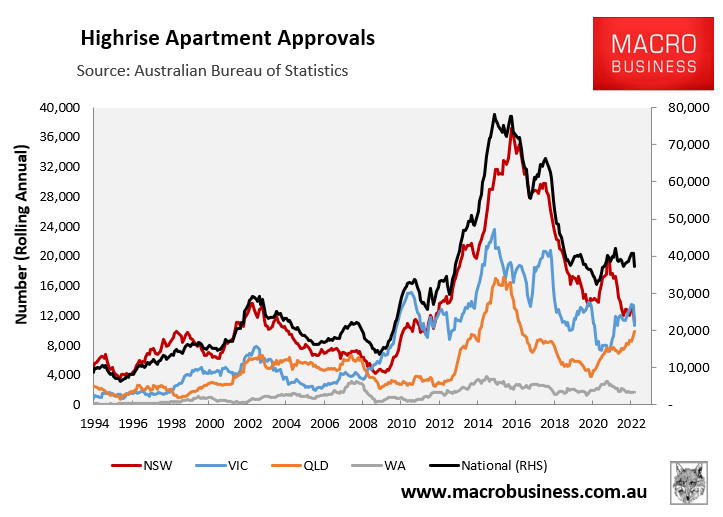CoreLogic’s latest rental market results showed that apartment rents have soared across the five major capitals, as clearly illustrated below:

This surge in rents has followed a collapse in unit rents to just 0.9% – the lowest rate on record:

The forward looking indicators are worrying for the apartment rental market.
Across Australia, apartment construction has ground to a halt.
The following chart depicts annual apartment approvals, commencements, and completions, revealing that construction levels have fallen to decade lows:

The following chart shows annual high-rise apartment approvals nationally and across the main states through February 2023.
As you can see, approvals have plummeted across the board, most notably in NSW (Sydney):

As reported in The AFR, Melbourne developer and builder Pitard Group this week declared the off-the-plan apartment market “dead”.
“Launching a project prior to commencing building and waiting for pre-sales is a thing of the past”, explained Marianne Pitard, head of real estate at Pitard Group.
Pitard stated that low customer confidence, multiple construction business failures, concerns about growing construction costs, and “general volatility” had made it difficult to sell a project off-the-plan.
Real estate consultants Charter Keck Cramer also told The AFR that just over 5000 apartments were completed last year in Melbourne, compared to around 12,000 completed in 2021 and nearly 15,000 in 2020.
This year, around 12,000 flats are scheduled to be finished, but just 5,000 in 2024 and 4,000 in 2025.
At the same time as apartment construction is collapsing, overseas migration (population growth) is soaring.
Following a record 482,000 increase in Australia’s population last year, the Australian Treasury last week projected that net overseas migration (NOM) will reach 400,000 this fiscal year and 315,000 in 2023-24.
That’s way above the 235,000 annual NOM forecast in the September federal budget and January’s Population Statement.
As a result, increased rental demand will continue to meet declining availability, tightening the rental market and driving up rents.
Put simply, the Albanese Government’s record immigration policy is a disaster for the rental market, ensuring that rents continue to skyrocket, putting poorer households in significant financial distress and causing thousands more people to become homeless.
Where will the hundreds of thousands of migrants and students that arrive each year reside when there is already a catastrophic lack of housing for the existing population?
Labor’s Big Australia immigration strategy is an inequality disaster for renters and poorer Australians.

